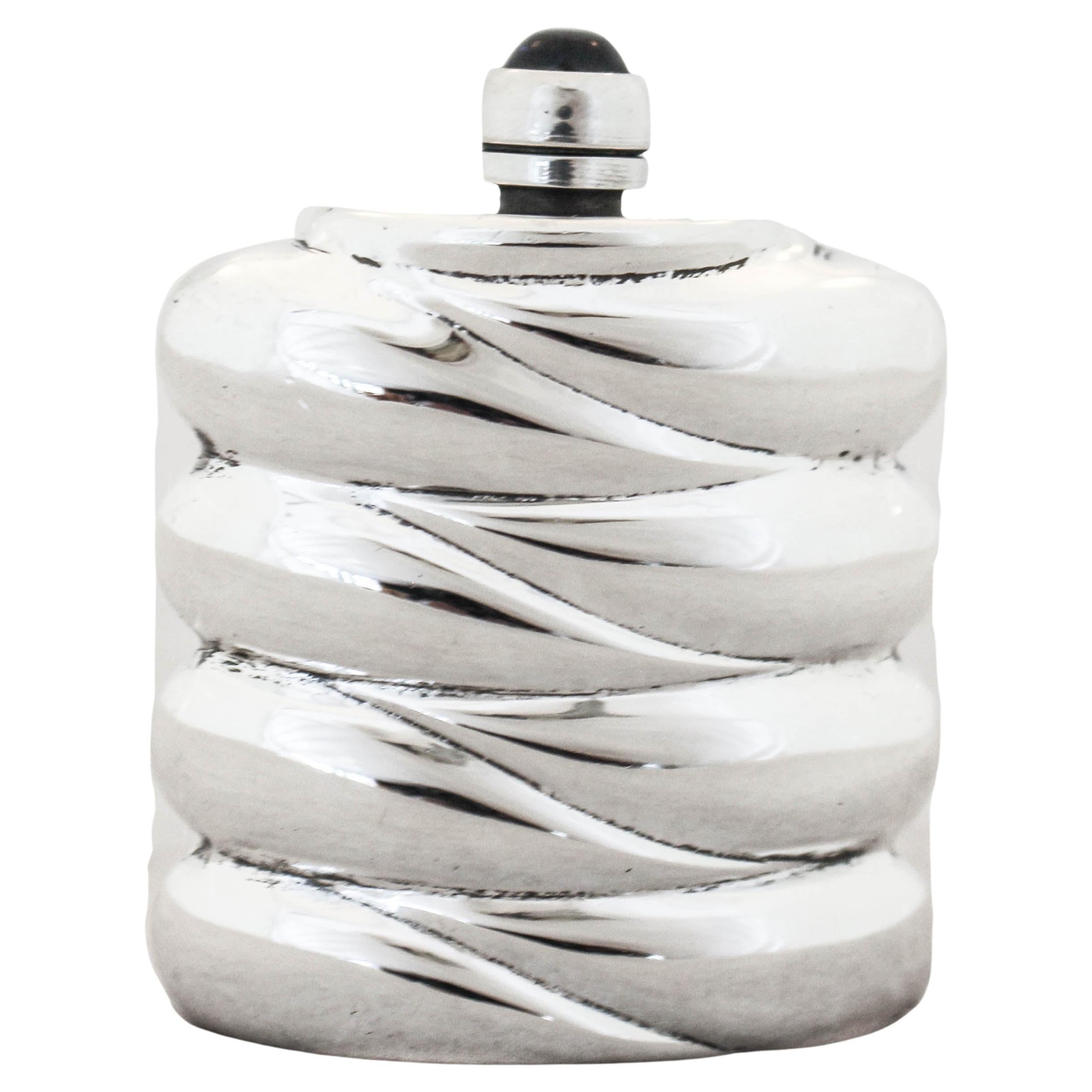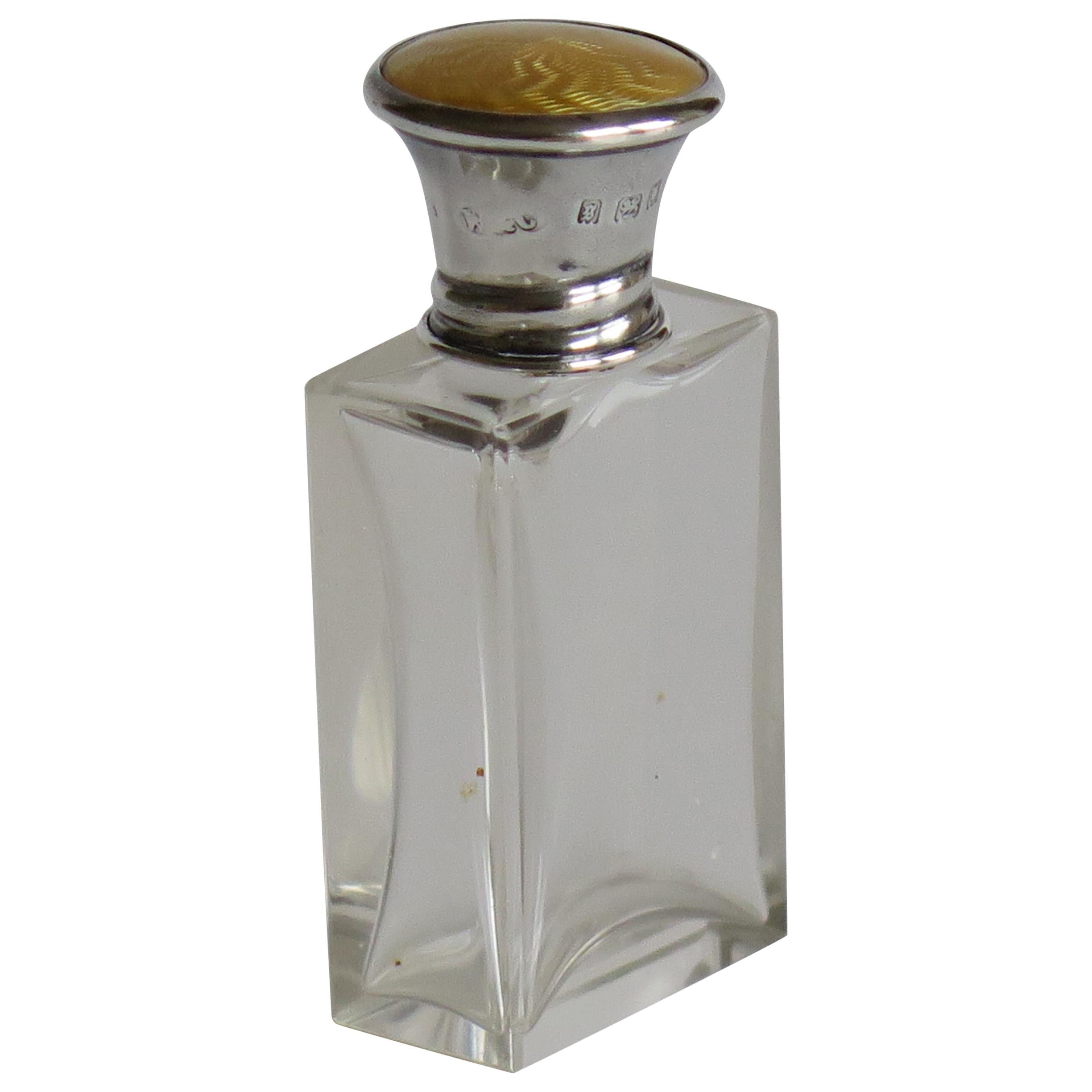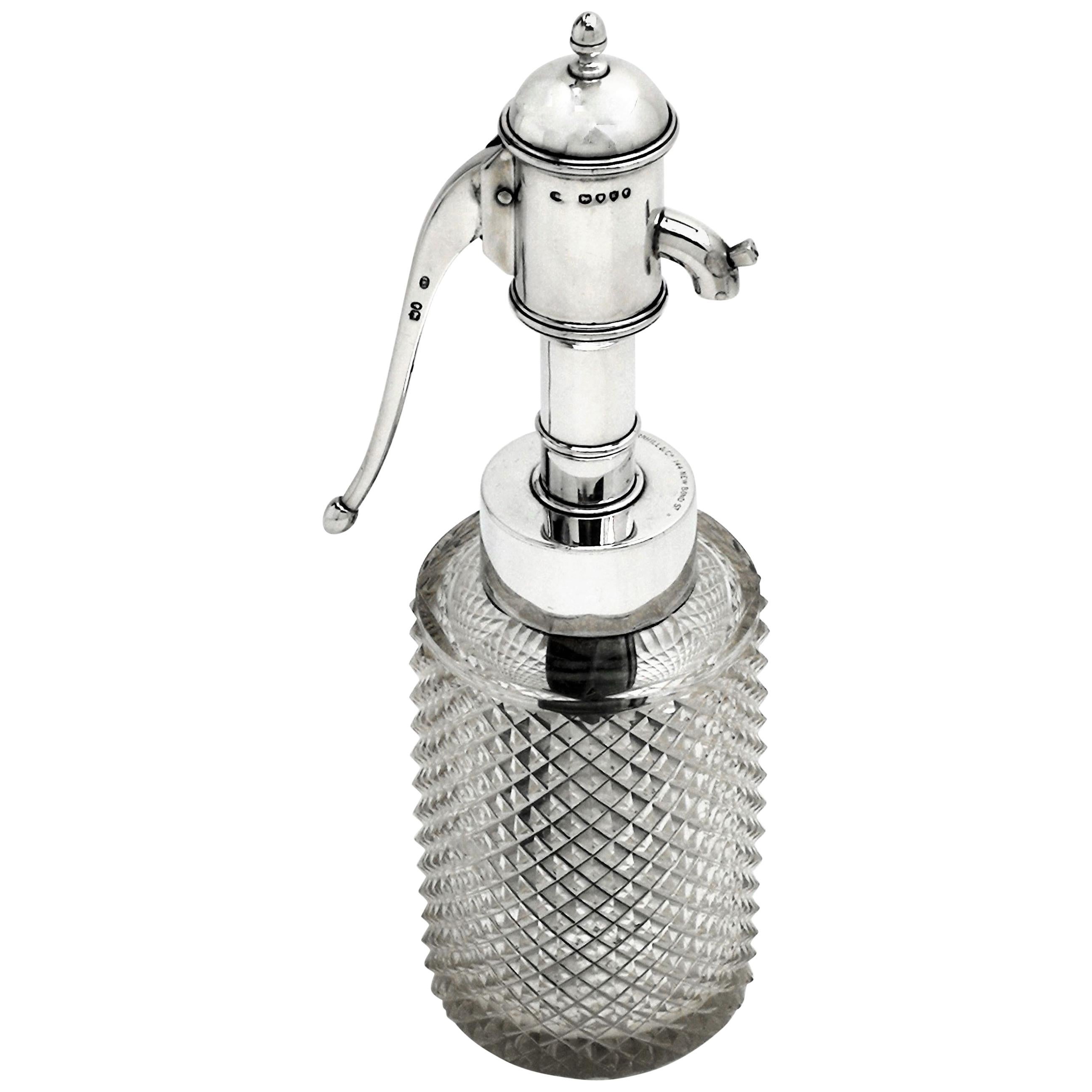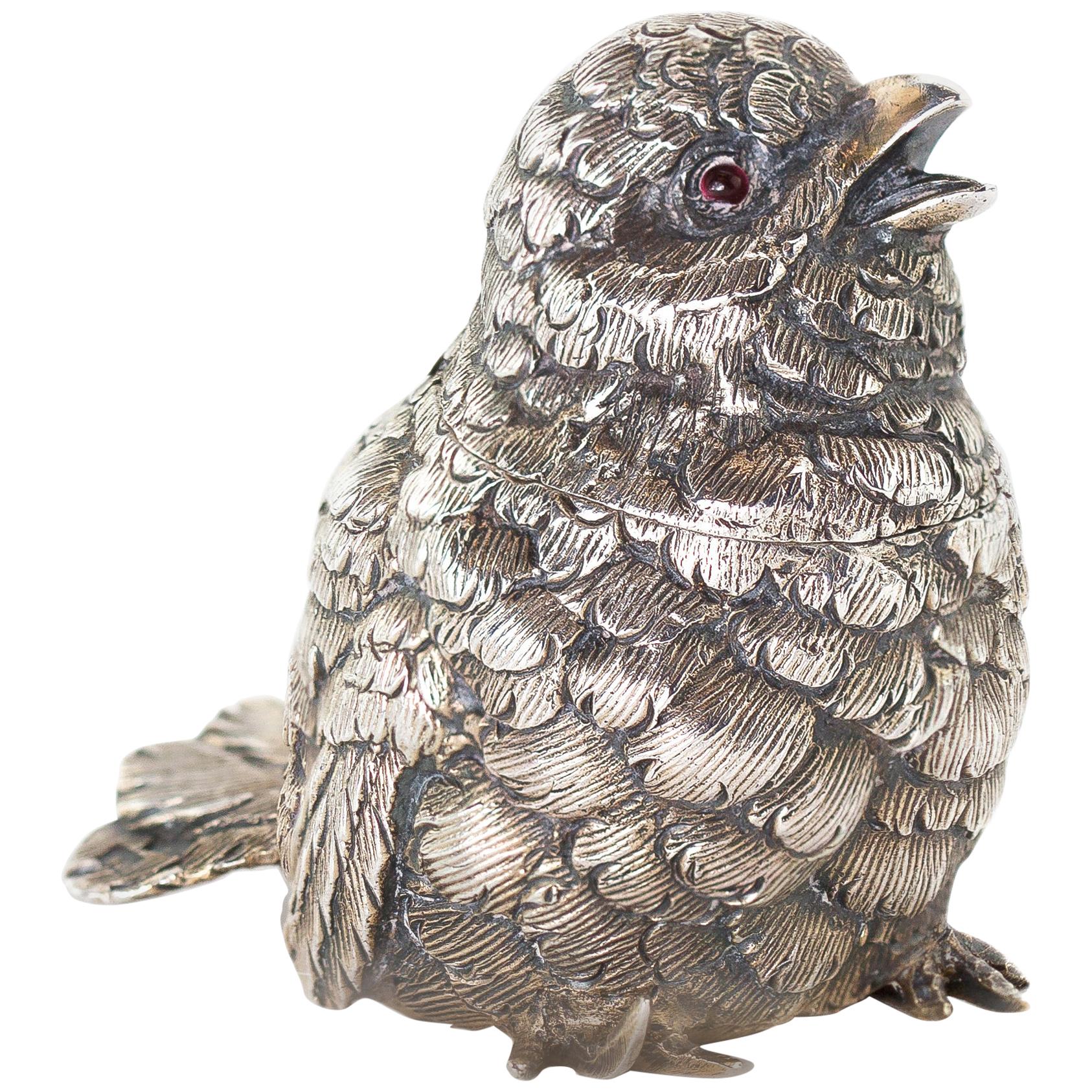Items Similar to 19C Anglo Indian Silver Perfume Bottle Case
Want more images or videos?
Request additional images or videos from the seller
1 of 13
19C Anglo Indian Silver Perfume Bottle Case
About the Item
19C Anglo Indian solid silver perfume bottle case.
Lovely 19th century Anglo-Indian solid silver perfume bottle case with profuse repousse work.
Not hallmarked because it was made in Colonial India, but solid silver and beautifully made.
Both the Base and the lid have blank cartouches’ for personalized engraving. This is an advantage as you can have them engraved personally if you wish !!
An elegant lady would place her perfume bottle inside !
From Circa 1880, the time of the raj !!
- Dimensions:Height: 4.5 in (11.43 cm)Diameter: 1.85 in (4.7 cm)
- Style:Anglo Raj (Of the Period)
- Materials and Techniques:Sterling Silver,Repoussé
- Place of Origin:
- Period:
- Date of Manufacture:1880
- Condition:Wear consistent with age and use. Minor structural damages. Very good original condition. One or two very minor indents.
- Seller Location:Dallas, TX
- Reference Number:1stDibs: LU3978124943642
About the Seller
4.9
Platinum Seller
These expertly vetted sellers are 1stDibs' most experienced sellers and are rated highest by our customers.
Established in 2015
1stDibs seller since 2018
349 sales on 1stDibs
Typical response time: <1 hour
- ShippingRetrieving quote...Ships From: Dallas, TX
- Return PolicyA return for this item may be initiated within 7 days of delivery.
More From This SellerView All
- 19C Anglo Indian Sadeli Mosaic Greeting Card CaseLocated in Dallas, TXPresenting a superb 19C Anglo Indian Sadeli Mosaic greeting card case. Made in or around Bombay, India circa 1880. This is a greeting card case used for holding your greeting cards or business cards of the day ! The body of the case is made from sandalwood and it is fully overlaid with bone and highly intricate Sadeli Mosaic made up of thousands of micro mosaic pieces of bone, ebony, silver/pewter and semi precious stone. The workmanship is stupenduous !!!! This case is almost museum quality. One or two very, very minor losses of mosaic mainly where the top meets the body but otherwise near mint ! SADELI MOSAIC: “Anglo Indian boxes were made in India for the English residents from the early part of the 18th century. They were brought back or sent back to England usually by the people who had commissioned them. From the beginning of the nineteenth century they were imported more commercially, although not in any significant numbers until the middle decades. They were very highly valued, especially the early ones, to the extent that the designs were copied on late 19th and early 20th century tins. The ancient art of Sadeli Mosaic is said to have been introduced from Shiraz in Persia via Sind to Bombay, a long time before the Anglo Indian boxes were made. It was a technique, which required a high degree of skill and patience. It was executed very lavishly, in that the frequent cuts wasted a great amount of the precious materials used. The workmanship was however more than commensurable to the value of the materials. Ivory, silver, pewter (or other metals), wood and horn were cut into faceted rods which were bound together to form geometric patterns. When the glue has set, the rods were sliced in transverse sections. This gave the maker a number of angled circular pieces in the original pattern. Several variations of patterns could be achieved by combining the materials in different ways. The ivory was sometimes dyed green to give an extra color. The mosaic pieces in a combination of patterns, often separated by ivory, ebony, horn or silver stringing were used to veneer sandalwood boxes. In the early boxes, which date from the turn of the 18th to the 19th century, there are large panels of mosaic covering tops and sides of boxes. It took incredible skill to cover such large areas without any shakes or wavering of the pattern. The corners and joins on these boxes are impeccably matched. The makers (reputed to be Persian) of Sadeli mosaic made in the first two decades of the 19th century displayed a total understanding of the qualities of the different materials they used. They combined substances, which can expand and contract according to atmospheric conditions with others, which are hard and unyielding. The result was a sharp definition of the lines and patterns, which made up the whole design. On the early boxes the designs look deceptively simple. The fact is, they emerged from a culture, which had mastered geometry and understood how to generate a pattern from a set number of points. The patterns are so harmoniously combined that their incredible complexity is not immediately apparent. The earliest Sadeli boxes...Category
Antique Late 19th Century Indian Anglo Raj Decorative Boxes
MaterialsBone, Precious Stone, Ebony
- 19C Anglo Indian Vizigapatam Stamp BoxLocated in Dallas, TXPresenting an absolutely gorgeous and very rare 19C Anglo Indian Vizigapatam stamp box. Made in Colonial India (the Time of the Raj) circa 1860. Prob...Category
Antique Mid-19th Century Indian Anglo-Indian Decorative Boxes
MaterialsBone, Shell
- 19C Anglo Indian Highly Carved Padouk and Mosaic Folio CoverLocated in Dallas, TXPRESENTING A RARE AND DESIRABLE 19C Anglo Indian Highly Carved Padouk and Mosaic Folio Cover. This is a VERY RARE piece of Anglo-Indian and British Victorian Colonial history! ...Category
Antique Late 19th Century Indian Anglo Raj Decorative Boxes
MaterialsBone, Precious Stone, Sandalwood
- 19C Anglo Indian Bombay MOP Sadeli Mosaic Trinket BoxLocated in Dallas, TXPRESENTING a LOVELY 19C Anglo Indian Bombay MOP (Mother of Pearl) Sadeli Mosaic Trinket Box from circa 1875-85. Gorgeously detailed and hand-crafted ‘sadeli mosaic’ inlay, from the Bombay Area, with deep greens with silver, pewter, mother of pearl, bone and ebony in geometric patterns. The box case, is made of sandalwood but completely covered in MOP, bone, faux ivory, ebony and mosaic inlay. Edged with faux ivory and banded with a different pattern of sadeli mosaic. Some minor damage to the top (repair is obvious in pics) and ivorine replacements to some edging, but it still a BEAUTIFUL BOX and of real QUALITY! The mosaic work is FABULOUS! Box opens to reveal its original blue velvet lining. It sits on 4 (recently added) silvered button feet. SADELI MOSAIC: “Anglo Indian boxes were made in India for the English residents from the early part of the 18th century. They were brought back or sent back to England usually by the people who had commissioned them. From the beginning of the nineteenth century they were imported more commercially, although not in any significant numbers until the middle decades. They were very highly valued, especially the early ones, to the extent that the designs were copied on late 19th and early 20th century tins. The ancient art of Sadeli Mosaic is said to have been introduced from Shiraz in Persia via Sind to Bombay, a long time before the Anglo Indian boxes were made. It was a technique, which required a high degree of skill and patience. It was executed very lavishly, in that the frequent cuts wasted a great amount of the precious materials used. The workmanship was however more than commensurable to the value of the materials. Ivory, silver, pewter (or other metals), wood and horn were cut into faceted rods which were bound together to form geometric patterns. When the glue has set, the rods were sliced in transverse sections. This gave the maker a number of angled circular pieces in the original pattern. Several variations of patterns could be achieved by combining the materials in different ways. The ivory was sometimes dyed green to give an extra color. The mosaic pieces in a combination of patterns, often separated by ivory, ebony, horn or silver stringing were used to veneer sandalwood boxes. In the early boxes, which date from the turn of the 18th to the 19th century, there are large panels of mosaic covering tops and sides of boxes. It took incredible skill to cover such large areas without any shakes or wavering of the pattern. The corners and joins on these boxes are impeccably matched. The makers (reputed to be Persian) of Sadeli mosaic made in the first two decades of the 19th century displayed a total understanding of the qualities of the different materials they used. They combined substances, which can expand and contract according to atmospheric conditions with others, which are hard and unyielding. The result was a sharp definition of the lines and patterns, which made up the whole design. On the early boxes the designs look deceptively simple. The fact is, they emerged from a culture, which had mastered geometry and understood how to generate a pattern from a set number of points. The patterns are so harmoniously combined that their incredible complexity is not immediately apparent. The earliest Sadeli boxes...Category
Antique Late 19th Century Indian Anglo-Indian Jewelry Boxes
MaterialsSilver
- 19C Anglo Indian Carved Padouk Wood and Sadeli Mosaic BoxLocated in Dallas, TXPRESENTING A LOVELY 19th century Anglo-Indian Carved Padouk Wood and Sadeli Mosaic Box, featuring a carving of a Hunt Scene. Made circa 1870 in Bombay, India during the Rule of th...Category
Antique Late 19th Century Indian Anglo-Indian Jewelry Boxes
MaterialsSilver, Pewter
- 19C Anglo Indian Vizagapatam Bone and Shell Domed Stationery BoxLocated in Dallas, TXPRESENTING A LOVELY 19C Anglo Indian Vizagapatam Bone and Shell Domed Stationery Box – ‘Alice’s Box’. Made in Vizagapatam, India, circa 1860-80. We call this one: “Alice’s Box”! It has lived ‘a hard, well used and traveled life’, as is evident from the number of losses and repairs, as is obvious from the photos, especially to the faux ivory panels and bands to the top. The bonus to the loss of the frieze panels to the dome has a ‘bonus’, however, as their loss has revealed the most GORGEOUS faux blonde tortoiseshell underneath! The box is dome/casket shaped. The top has 3 bands, with the center one being the original. The 2 side bands are later ivorine. The faux ivory and hand-painted medallions on the domed lid, have been saved and they depict Hindu Gods, Vishnu and Shiva. The front and side panels are still in pretty good shape and are decorated with lac ink (indelible ink made from crushed beetles) depicting lovely floral designs. The domed lid open to reveal a series of open compartments for envelopes, writing paper etc. and one lidded panel for stamps. Inside the box are 2 paper labels: one probably being the original item ticket and the other with: ” Alice’s address is 272 Ashworth Ave, Toronto 4, Ontario”. Probably, the original owner? Hence, we call it ‘Alice’s Box’. What a journey/life this box has had! Made in India, made its way to Canada, back to Ireland and then to Texas! This is why, WE LOVE ANTIQUES...Category
Antique 19th Century Indian Anglo-Indian Decorative Boxes
MaterialsBone, Shell, Sandalwood
You May Also Like
- Sterling Silver Perfume BottleLocated in Brooklyn, NYA sterling silver perfume bottle with a modernism design. It has swirls around the front and back with a scalloped edge. On top a lapis stone cr...Category
Vintage 1950s Mexican Sterling Silver
MaterialsSterling Silver
- Sterling & Enamel Perfume BottleBy T. G. Hawkes & Co.Located in Brooklyn, NYBeing offered is a lovely perfume bottle by the Hawkes Glass Company. It has a sterling silver enamel stopper and crystal bottle. The glass has acid-etched flowers and leaves going a...Category
Vintage 1920s American Sterling Silver
MaterialsSterling Silver
- Guilloche & Silver Topped Glass Scent or Perfume Bottle, London 1922Located in Lincoln, LincolnshireThis is a beautiful scent, cologne or perfume glass bottle with a gold coloured Guilloche enamel and sterling silver topped screw top lid, made in Lond...Category
Early 20th Century English Art Deco Bottles
MaterialsSilver
- Antique Sterling Silver Scent or Perfume Bottle with Chased DecorationLocated in Hamilton, OntarioThis antique perfume bottle is signed by an unknown English maker and dates to approximately 1898 and done in the period Victorian style. The bottle is done in sterling silver with a...Category
Antique Late 19th Century English Victorian Bottles
MaterialsSterling Silver
- Unusual Antique Victorian Silver & Cut Glass Scent Bottle Perfume Atomiser, 1885By Edward H. StockwellLocated in London, GBA novel antique Victorian Silver mounted Scent Bottle / Perfumer with a cut glass body. This unusual Scent Bottle is whimsically shaped as a water pump with a tall silver neck with a...Category
Antique 1880s English Victorian Bottles
MaterialsSilver
- Edwardian Silver Perfume Bottle Scent Holder in a Shape of a Bird, 1905By WILLIAM HORNBY, LONDON (1898-1913)Located in Braintree, GBAntique very rare Edwardian silver gilt perfume bottle/ scent holder in a shape of a bird Bird's eyes are made of rubies, interior has glass liner...Category
Antique Early 1900s British Edwardian Bottles
MaterialsSterling Silver
Recently Viewed
View AllMore Ways To Browse
Cased Silver
Silver Made In India
India Sterling
Sterling Silver India
Antique Solid Silver Case
Perfume Bottles With Silver
Antique Cans And Bottles
Sterling Silver Perfume
Indian Raj
Anglo Indian Silver
Antique Silver From India
19th Century Raj
Sterling Silver Lady
Antique Indian Silver India
Perfume Case
Sterling Perfume Bottles
Sterling Silver Perfume Bottle
Indian Solid Silver





